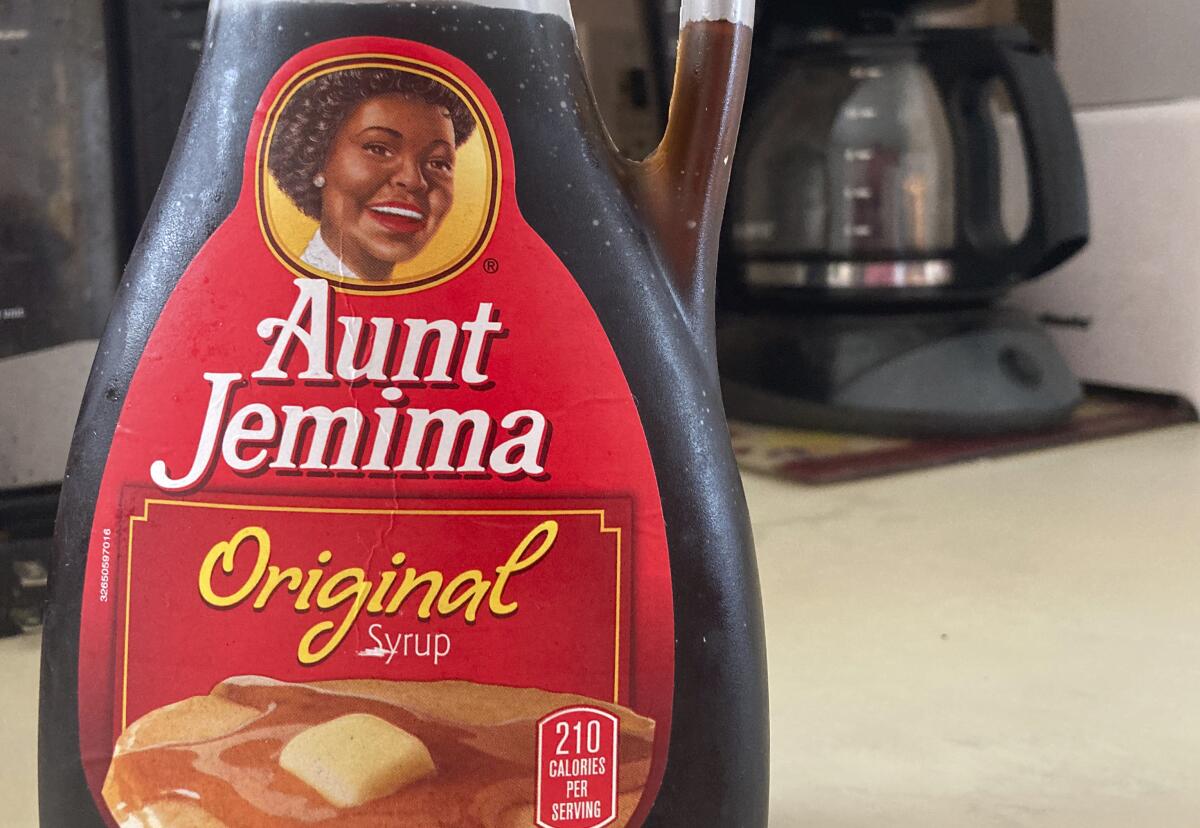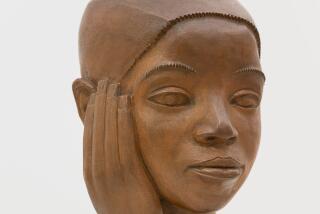Op-Ed: Quaker Oats may ‘bury’ Aunt Jemima, but her image will live on in powerful and subversive works of art

- Share via
Amid what seems like one cultural sea change after another, 2020 will surely be remembered for the widespread purging of racist and imperialist symbols from the public sphere. We’re suddenly witnessing a remarkable social awakening and resolve to remove from public view the material reminders of a dishonorable past pertaining to peoples of color.
This includes the dismantling of monuments dedicated to glorifying the Confederacy’s “Lost Cause” narrative, and the destruction of statues commemorating both colonialism and the suppression of indigenous peoples by assorted heroes of Western civilization.
As astounding as these overdue acts of a “woke” social consciousness are, Quaker Oats’ recent decision to retire Aunt Jemima — its highly problematic Black female character and brand — from its pancake mix and syrup lines is perhaps the most astonishing and poignant of them all.
A collective sigh of relief could be heard after the statue of Jefferson Davis, president of the Confederate states, fell in Richmond, Va., and slave trader Edward Colston’s statue came down in Bristol, England.
In contrast, the fact that Aunt Jemima, the epitome of racial stereotypes with roots in the late 1800s, would no longer be visibly present and a convenient foil for cultural commentary strikes me as not so much an abrupt “good riddance” but rather as a phenomenon worthy of deep reflection. Her passing is, arguably, almost elegiac.
As an art historian who writes about Black art and visual culture, I am aware of the ubiquity of racial stereotypes, the trauma they impose on our collective psyche and, curiously, how many modern and contemporary artists have redeployed these stereotypes, especially Aunt Jemima, in service to an often satirical, countervailing artistic statement.
“Yes,” the painter Robert Colescott stated in 1983, the “mammy figure is the American descendant of the prehistoric Mother Earth goddess.” As Colescott’s comments suggest, Aunt Jemima’s status extends beyond the stereotype and into the ranks of an icon, as seen in his paintings and in the works of modern and contemporary artists such as photo-based artist Renée Cox, assemblagist Betye Saar, installation artist Kara Walker and pop artist Andy Warhol.
At the height of the 1960s and 1970s Black Arts Movement, dramatists Maya Angelou, Amiri Baraka (previously known as LeRoi Jones), and Ed Bullins also reinterpreted Aunt Jemima and related Black stereotypes. These images became rhetorical devices for political transformation, morphing from deferential servants to defiant, gun-toting revolutionaries.
For many, this malignant stereotype created an opportunity for a parody, or better yet, for radical conversion of the Jemima image into an image of power, in a way that redeemed centuries of disparagement, belittlement and betrayal.
Growing up on Chicago’s predominantly African American South Side, I can’t forget the stinging homophonic schoolyard taunt “Ain’t yo mamma on the pancake box?’” that would generate peals of laughter and force the insulted to compose an equally biting rejoinder. In other words, the aspersion carried extraordinary power, enough to make the target want to punch back, either verbally or physically.
And not just because of Aunt Jemima’s negative associations, but because there was something familial and personal in the derision. It was a taunt that hit working-class Black Americans with a directed specificity, forcing us to probe our own color and class prejudices and barometers of beauty and self-worth.
The Aunt Jemima figure has been tenacious in the American imaginary, and efficacious in illustrating Black American denigration, interracial subterfuge and, paradoxically, Black liberation.
In the end, Quaker Oats’ decision to “bury” Aunt Jemima may prove futile, however necessary it may be at this moment of circumspection and reconciliation in racial matters. As this character has uncannily proclaimed time and time again, whether in vintage advertisements or modern and contemporary works of art, “I’se in town, Honey.”
Richard J. Powell is a professor of art and art history at Duke University, and the author of the forthcoming book “Going There: Black Visual Satire.”
More to Read
A cure for the common opinion
Get thought-provoking perspectives with our weekly newsletter.
You may occasionally receive promotional content from the Los Angeles Times.










